As any homeowner or gardener knows, choosing the right ground cover can make a significant difference in the look and feel of your outdoor space.
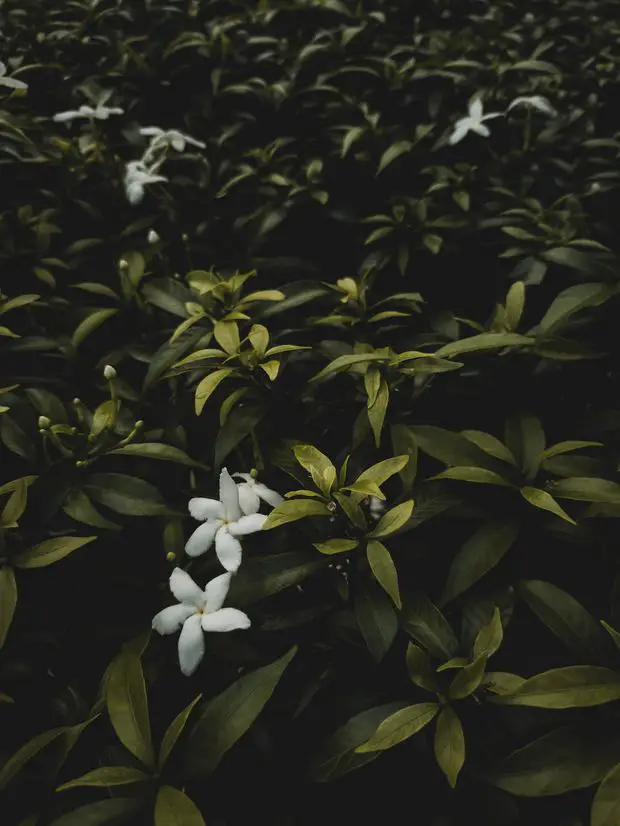
Ground covers can provide an array of benefits, such as reducing soil erosion, suppressing weeds, and enhancing the aesthetic appeal of your lawn or garden.
While there are many options to choose from, grass and jasmine are two of the most popular ground cover choices. But what are the pros and cons of grass versus jasmine as a ground cover?
Grass is low-maintenance, hardy, and good for high-traffic areas, but can be invasive and prone to pests. Jasmine is visually appealing and adds fragrance, but requires more maintenance and fertile soil. The choice depends on personal preference, climate, soil type, and maintenance level.
Grass is a classic and versatile option that has been used for centuries to create lush lawns and playing fields.
Jasmine, on the other hand, is a beautiful and fragrant flowering plant that can add an elegant touch to your garden or patio.
While both grass and jasmine have their advantages, they also have drawbacks to consider.
Grass requires regular maintenance, such as watering and mowing, and can be prone to pests and diseases. Jasmine, on the other hand, can be invasive and may attract bees and other insects.
As with any landscaping decision, it is important to weigh the pros and cons carefully to determine which ground cover is the best fit for your specific needs and preferences.
In this article, we will explore the benefits and drawbacks of grass and jasmine as ground covers, drawing from personal experience and research to provide a comprehensive overview of each option.
Whether you are starting from scratch or looking to replace an existing ground cover, this guide will help you make an informed decision for your outdoor space.
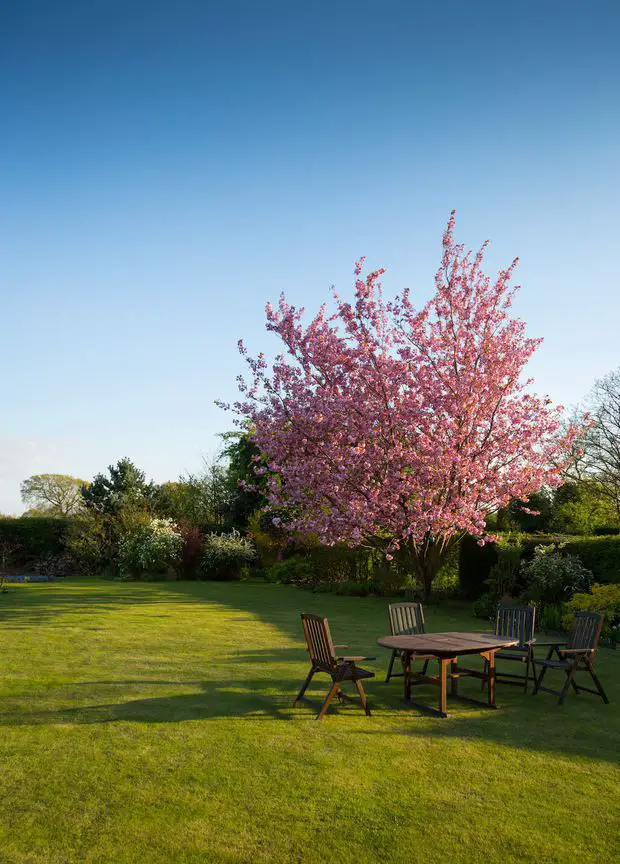
Pros and cons of grass versus jasmine ground cover
Grass as a ground cover. Pros

Personally, I find grass to be a reliable and practical ground cover, particularly, when it comes to the minimal effort that it requires to keep it looking healthy and vibrant.
Grass as a ground cover. Cons

In my experience, the biggest drawback is that in the hot and dry months, the lawn requires frequent watering and mowing which can become a chore.
Maintaining a healthy lawn can add up the costs over time and can be a concern in drought-prone areas or regions with limited water resources.
Jasmine as a Ground Cover. Pros
In my opinion, I have always found jasmine to be a stunning ground cover that adds a unique and inviting element to my outdoor space.
Nothing beats the sweet scent of the delicate white flowers of a jasmine cover.
It simply creates a serene and calming environment that is perfect for relaxing or entertaining guests.
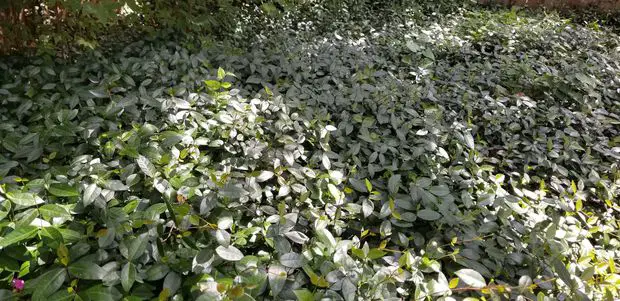
Jasmine as a Ground Cover. Cons
Jasmine can be invasive and aggressive, which can cause problems if it starts to spread to areas where you don't want it.
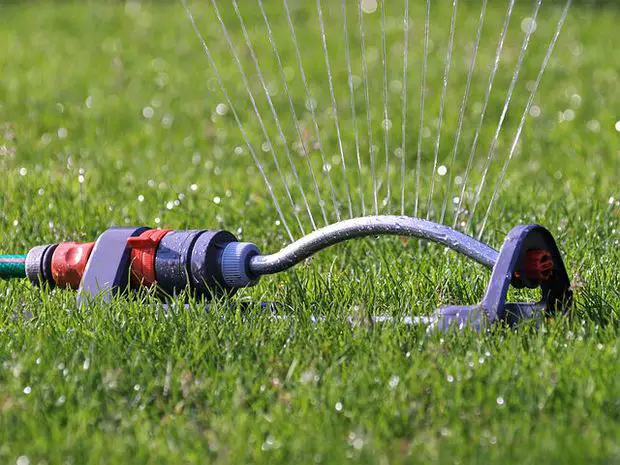
It can take some time for jasmine ground covers to establish and start producing blooms, which requires a bit of patience and dedication from the gardener.
In my experience, the invasiveness of jasmine can be a concern. It can quickly spread and take over areas, making it challenging to manage and maintain.
While I love the fragrance of my jasmine covers, it definitely can be a bit overwhelming, as it is an invasive species that can quickly spread and take over areas, making it challenging to manage and maintain.
Does Jasmine make a good ground cover?
Jasmine is a popular choice for ground cover due to its attractive foliage, fragrant flowers, and ease of care.
However, whether or not jasmine makes a good ground cover depends on a variety of factors, including the species of jasmine, the growing conditions, and the intended use of the ground cover.
One species of jasmine that is commonly used as a ground cover is the Asiatic jasmine (Trachelospermum asiaticum), which is native to East Asia.
This species has small, glossy leaves and produces fragrant white or yellow flowers in the spring and summer.
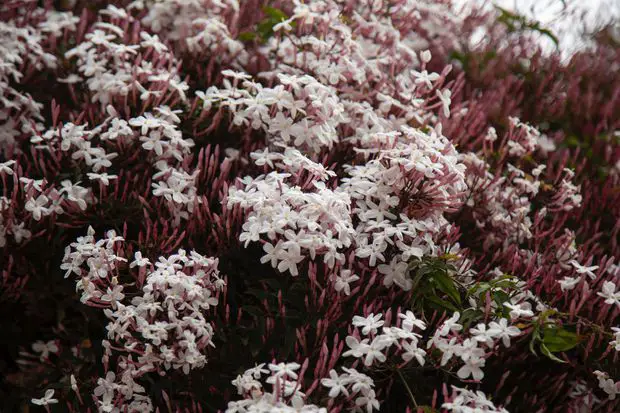
It is a slow-growing plant that can form a dense mat, making it a good choice for erosion control and weed suppression.
Asiatic jasmine is also relatively easy to care for, requiring only occasional watering and minimal pruning to keep it looking neat and tidy.
It can tolerate a wide range of soil types and can grow in both sun and shade, making it a versatile option for landscaping.
Another species of jasmine that is commonly used as a ground cover is the star jasmine (Trachelospermum jasminoides), which is native to China and Japan.
This species has larger leaves than Asiatic jasmine and produces fragrant white or pink flowers in the summer. It is also a slow-growing plant that can form a dense mat, making it a good choice for ground cover.
Star jasmine is also relatively easy to care for, requiring only occasional watering and pruning to keep it in check.
It can tolerate a range of soil types and can grow in both sun and shade, although it tends to flower more prolifically in full sun.
Both Asiatic jasmine and star jasmine can provide a number of benefits as ground cover, including weed suppression, erosion control, and aesthetic appeal.
However, there are some potential drawbacks to using jasmine as a ground cover.
One potential drawback is that some species of jasmine can be invasive and may spread beyond the intended area if not properly contained.
This can be a particular concern in areas where invasive species are a problem, as jasmine can compete with native plants for resources and disrupt local ecosystems.
Another potential drawback is that jasmine ground cover may not be suitable for all growing conditions.
Some species of jasmine require well-draining soil and may not tolerate overly wet or soggy conditions.
Additionally, jasmine ground cover may not be suitable for high-traffic areas, as the delicate leaves and stems can be easily damaged.
Finally, it is important to consider the intended use of the ground cover when deciding whether or not jasmine is a good choice.
For example, jasmine ground cover may not be appropriate for areas where children or pets will be playing, as some species of jasmine can be toxic if ingested.
Is jasmine ground cover invasive?
Jasmine is a popular ground cover option due to its beautiful flowers, pleasant fragrance, and ease of cultivation.
However, some species of jasmine can be invasive, which can have negative impacts on local ecosystems and human health.
Invasive species are plants, animals, or other organisms that are not native to a particular ecosystem and have the potential to cause harm to the environment, economy, or human health.
Invasive plants, in particular, can grow aggressively and outcompete native species for resources such as water, nutrients, and sunlight.
This can disrupt the balance of local ecosystems, reduce biodiversity, and alter natural processes such as soil erosion and nutrient cycling.
One species of jasmine that is considered invasive in some regions is the Japanese jasmine (Trachelospermum asiaticum).
This species is native to East Asia and has been introduced to other parts of the world, including the United States, where it has become an invasive species in some regions.
Japanese jasmine is a woody vine that can grow up to 30 feet long and has evergreen leaves and small white or yellow flowers.
It is popular in landscaping due to its attractive foliage and fragrance, but it can also be a significant threat to native plant species.
One of the reasons Japanese jasmine is considered invasive is its ability to spread rapidly via runners and stolons, forming dense mats that can choke out other plants and limit biodiversity.
Additionally, it can grow aggressively and outcompete native plant species, which can disrupt the balance of local ecosystems.
Other species of jasmine that are known to be invasive in certain regions include the Chilean jasmine (Mandevilla suaveolens), which is native to South America but has become a problematic invasive species in Hawaii, and the yellow jasmine (Jasminum fluminense), which is native to Brazil but has also become invasive in Hawaii and other parts of the world.
It is important to note that not all species of jasmine are invasive, and some can even be beneficial for the environment.
For example, Carolina jasmine (Gelsemium sempervirens), which is native to the southeastern United States, can provide food and habitat for native wildlife, including bees and butterflies.
However, it is important to research the specific species of jasmine ground cover you are considering planting and to check with local authorities to ensure it is not considered invasive in your region.
If you do decide to plant a species of jasmine ground cover, it is important to take steps to prevent it from becoming invasive.
This can include planting it in a contained area or using physical barriers such as edging or mulch to prevent it from spreading.
It is also important to regularly monitor the plant and remove any runners or stolons that have spread beyond the intended area.
In conclusion, some species of jasmine ground cover can be considered invasive, including the Japanese jasmine, which can spread rapidly and outcompete native plant species.
It is important to research the specific species of jasmine you are considering planting and to take steps to prevent it from becoming invasive, including planting it in a contained area and regularly monitoring and removing any spread beyond the intended area.
By taking these precautions, you can enjoy the beauty and fragrance of jasmine ground cover without contributing to the spread of invasive species.
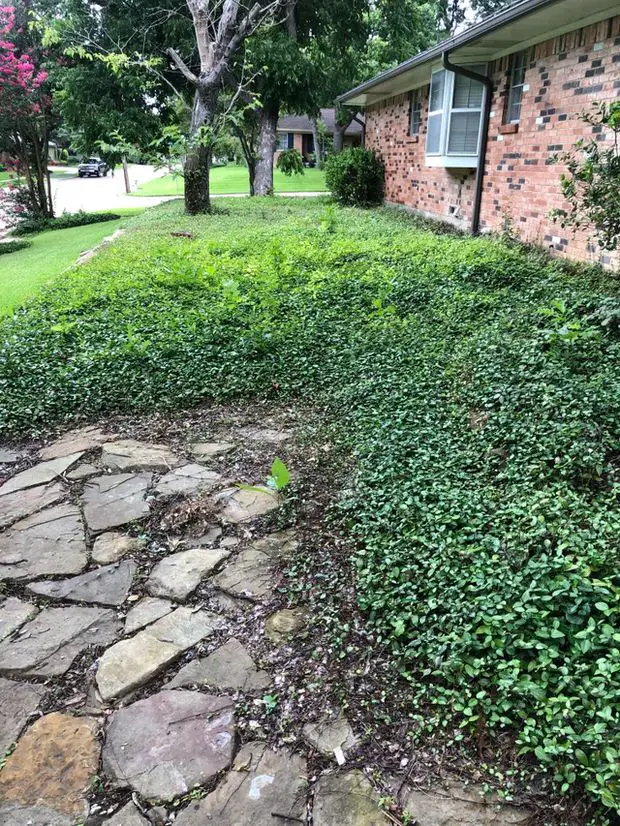
Final thoughts
Choosing between grass and jasmine as a ground cover will depend on several factors such as the desired look, the climate, soil type, and the level of maintenance required.
Grass is hardy and low maintenance, making it a good option for high-traffic areas or locations with children and pets. However, it can be invasive and vulnerable to pests and diseases.
Jasmine, on the other hand, is visually appealing with fragrant blooms and can add a touch of elegance to the landscape.
It requires more maintenance, but it can be a good choice for milder climates and areas with fertile soil.
Ultimately, the best option will depend on the specific needs and preferences of the gardener.
